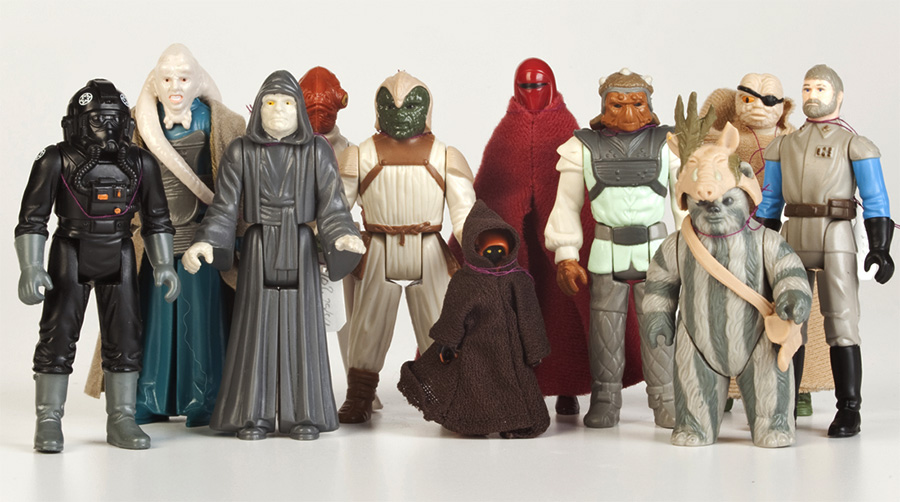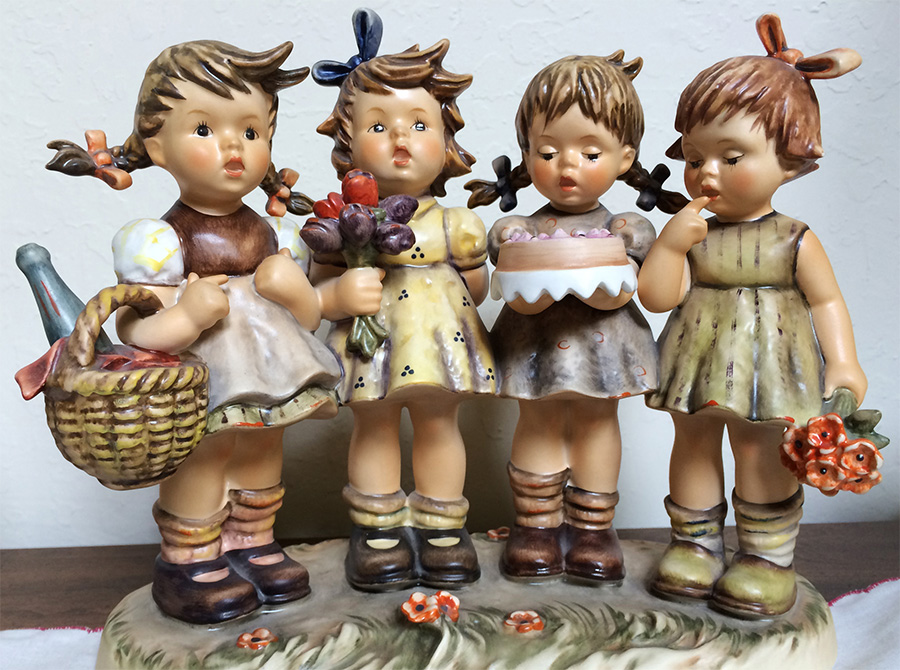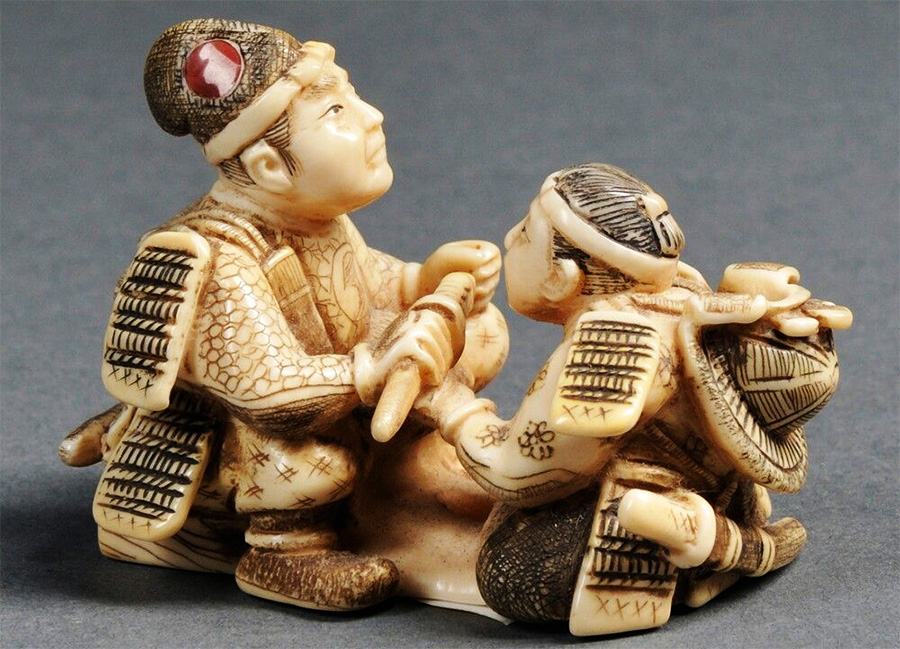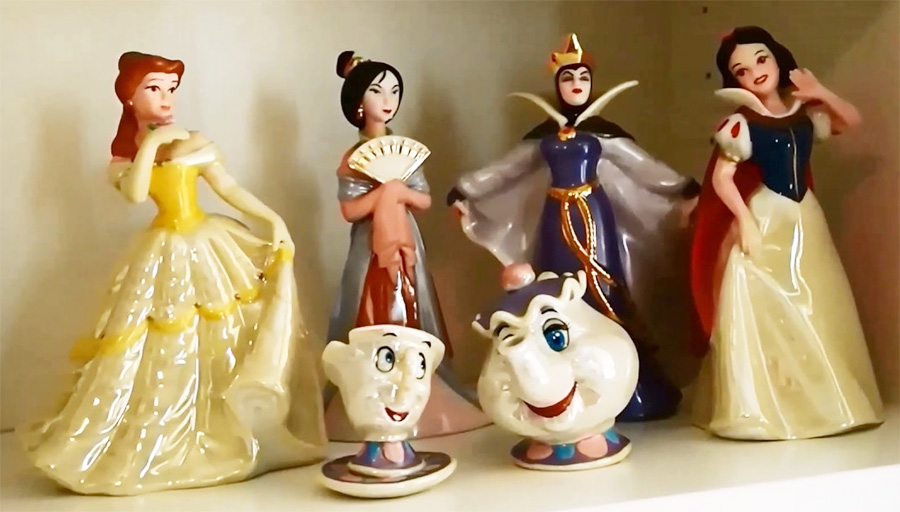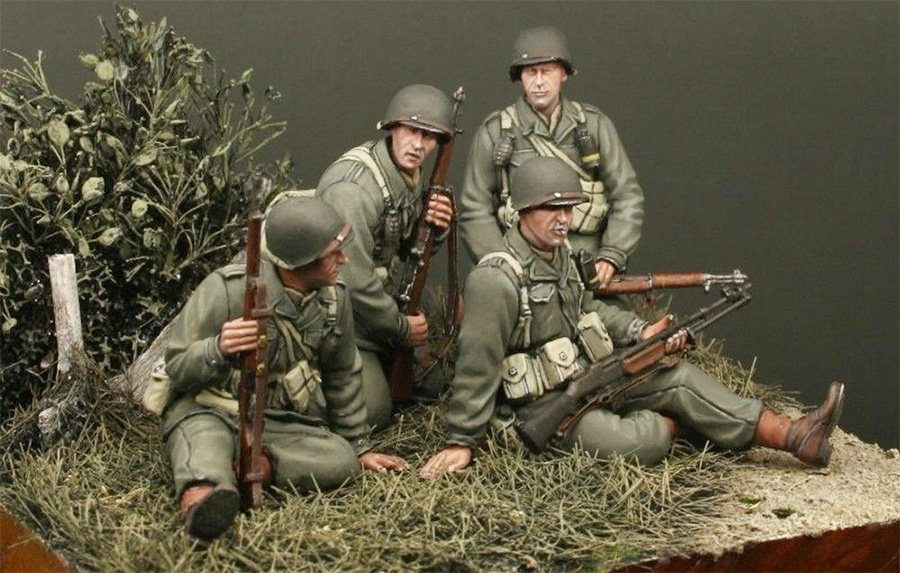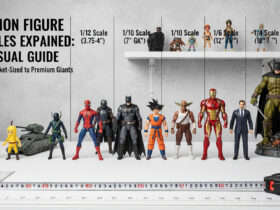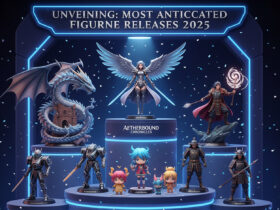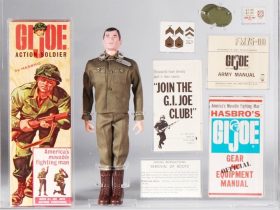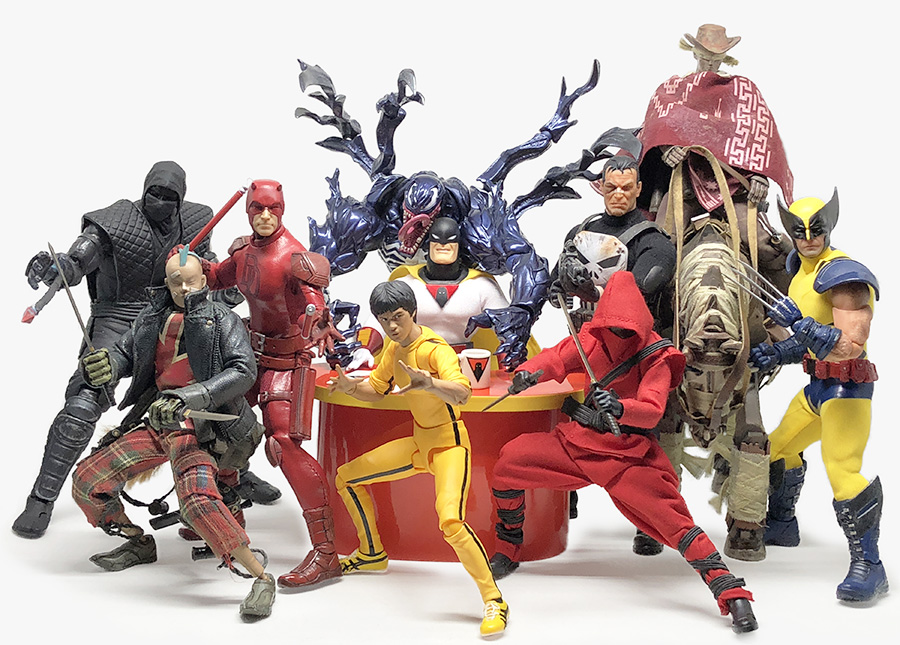Echoes in Six-Inch Scale: The Enduring Legacy of Dragon WWII Action Figures
There’s a quiet intensity that settles over you when you carefully unbox a Dragon Models 1/6 scale World War II action figure. It’s not the frantic rip of a kid opening a new toy; it’s a deliberate, almost reverent act. You’re unwrapping history, meticulously recreated in plastic, fabric, and tiny, delicate metal. Each buckle, each insignia, each worn fold in a uniform tells a story, a miniature echo of a past that reshaped the world.
For a certain generation of collectors, Dragon Models wasn’t just a company; it was the company. They redefined what a military action figure could be. Before Dragon, 1/6 scale (often called “12-inch figures” after the original G.I. Joe) was a niche dominated by simpler, more generic offerings. Dragon didn’t just step into that space; they blew it open with an obsessive dedication to historical accuracy, an avalanche of highly detailed accessories, and an unparalleled commitment to realism. They didn’t make “toys”; they made wearable, poseable, museum-quality miniatures.
This isn’t just an article; it’s a deep dive into that legacy. We’re going to explore what made Dragon’s WWII line so legendary, from their meticulous research to the sheer volume of their releases. We’ll delve into the specific keywords and collectible aspects that define the hobby today, and most importantly, we’ll equip you with the knowledge to understand the true “value” of these incredible figures – a value that goes far beyond a simple price tag, rooted in their historical significance, their unparalleled detail, and the passion of the collectors who cherish them.
Part 1: The Dragon Revolution – Redefining 1/6 Scale Military Figures
Before Dragon Models burst onto the scene in the late 1990s, the 1/6 scale military figure market was relatively sleepy. You had G.I. Joe, which, while iconic, was more about imaginative play than historical accuracy. Other companies offered generic uniforms and accessories.
Dragon Models, a Hong Kong-based company, changed everything. They didn’t just make a figure; they made a statement.
The Pillar of Detail: Why Dragon Stood Out
Dragon’s immediate impact was due to its fanatical commitment to detail, especially in World War II figures.
- Historical Accuracy: This was their mantra. Dragon employed historical consultants and obsessively researched every uniform, weapon, and piece of equipment. If a specific unit wore a certain type of boot in 1944, Dragon made that boot. If a helmet had a particular decal, it was there. This level of fidelity was unprecedented.
- Material Authenticity: They didn’t just mold plastic. They used miniature versions of real materials: cloth uniforms, leather (or simulated leather) straps and pouches, actual metal for buckles, helmets (often die-cast metal or a realistic plastic compound), and even tiny, working bolt-action mechanisms on some rifle models.
- Articulation: Dragon bodies, while sometimes a little spindly early on, evolved to offer a significant degree of articulation. This allowed collectors to pose their figures in incredibly lifelike, dynamic ways, far beyond the static displays of earlier figures.
- Head Sculpts: Early Dragon head sculpts were good; later ones became truly exceptional, capturing distinct facial features, expressions, and even the “look” of a specific ethnicity or military type. Many collectors bought figures just for the head sculpt.
- Accessories Galore: Each Dragon figure was a treasure trove. A single figure might come with a full uniform, boots, helmet, weapon (often with a working bolt or removable magazine), multiple grenades, a trenching tool, canteen, gas mask canister, bread bag, bayonet, holster, and more. This wasn’t just one or two items; it was a full loadout. This became a key selling point for “Dragon Models accessory sets” and individual “Dragon 1/6 scale weapons” on the secondary market.
The Scale and Scope: A World at 1/6
Dragon didn’t just focus on a few iconic figures. Their ambition was to cover the entire war, from all sides.
- All Theatres: From the brutal Eastern Front to the dusty North African Campaign, the hedgerows of Normandy, and the jungle islands of the Pacific, Dragon explored every major theatre.
- All Combatants: They produced figures representing:
- German Wehrmacht & Waffen-SS: Their German figures were arguably their most extensive and detailed, often focusing on specific elite units or famous campaigns. Keywords here include “Dragon German WWII figure,” “Dragon SS figure,” “Dragon Fallschirmjäger.”
- US Army & Marines: From “Band of Brothers” type paratroopers to D-Day infantry and Pacific Marines. Keywords: “Dragon US WWII figure,” “Dragon D-Day,” “Dragon US Paratrooper.”
- British Army: Often focusing on Airborne or Desert Rats. Keywords: “Dragon British WWII figure,” “Dragon Commando.”
- Soviet Red Army: Less numerous than German or US, but highly sought after. Keywords: “Dragon Russian WWII figure,” “Dragon Red Army.”
- Japanese Imperial Army: Also rarer but very detailed. Keywords: “Dragon Japanese WWII figure.”
- Commonwealth & Others: Occasional releases of figures from Canada, Australia, etc.
This vast scope meant that a collector could, with dedication, build out incredibly diverse and historically rich dioramas and displays.
Part 2: The Core Lines – Identifying Your Dragon Figure
Dragon Models released their 1/6 scale figures under several key brand names and series. Understanding these helps in identifying your figures and assessing their place in the collection.
1. Dragon Action Figures / Dragon in Dreams (DiD) / Dragon Models Limited (DML)
This is the main, overarching brand. Figures were released under the “Dragon Action Figures” banner, sometimes with a “Dragon in Dreams” (DiD) sub-branding (which later spun off into its own, often more premium, company), and the company itself is Dragon Models Limited (DML).
- Product Names: Each figure had a unique name and often a number, for example, “Kurt Meyer,” “Siegfried,” “Captain Miller,” or “Private Ryan.” These names were often loosely based on historical figures or iconic movie characters.
- Key Feature: Often came with a highly detailed, realistic uniform, full accessories, and a weapon. Early figures came in large, windowed boxes. Later figures (especially those marketed more to collectors) came in closed, art-heavy boxes.
2. Dragon “Neo Body” / “New Generation Life Action Figure” (NGLAF)
Dragon was constantly innovating its base body.
- Neo Body: An early, more articulated body.
- NGLAF (New Generation Life Action Figure): This was a significant upgrade, offering even more articulation points, improved limb movement, and more realistic musculature, allowing for even more dynamic posing. Collectors often swapped out older bodies for NGLAF bodies.
3. Dragon 1/6 Scale Accessories & Uniform Sets
One of Dragon’s most brilliant moves was to release individual accessory packs and uniform sets. This allowed collectors to:
- Customize: Build their own unique figures using Dragon’s incredibly detailed gear.
- Upgrade: Replace worn or missing parts on older figures.
- Diorama Building: Provide spare equipment for scene staging. These sets are highly sought after today, especially “Dragon 1/6 scale uniform sets,” “Dragon 1/6 scale weapon packs,” and “Dragon 1/6 scale head sculpts.”
Part 3: The Unsung Heroes – Beyond the Infantryman
While the vast majority of Dragon’s WWII figures focused on infantry, they also ventured into more specialized (and often rarer) areas.
- Vehicle Crews: Tank commanders, artillery crewmen, and even pilots were produced, often with specialized uniforms and equipment specific to their role (e.g., German U-Boat crew, US Tanker).
- Medics & Support Staff: These were less common but highly valued for their unique gear (medical pouches, stretchers).
- Officers & NCOs: Often came with unique sidearms, binoculars, map cases, and distinct uniform details (e.g., specific officer’s tunics).
- Snipers & Specialized Units: Figures representing snipers (with detailed rifles and camouflage), flamethrower operators, or machine gun teams often came with large, unique accessories that made them stand out.
These specialized figures, due to their lower production runs and unique gear, are often more valuable than standard infantry figures.
Part 4: A Collector’s Guide to Value
Unlike modern mass-market action figures, assessing the “value” of a Dragon WWII figure is a nuanced task. It’s not about a simple price guide, but about understanding a confluence of factors.
1. Condition: The Alpha and Omega
This is the single most important factor. With figures that have so many small, delicate parts and real fabric, condition is everything.
- MIB (Mint in Box) / MISB (Mint in Box, Sealed): A figure that is still in its original, unopened packaging. This is the gold standard. The box should be in excellent condition (no crushing, tears, sun fading, or water damage). This commands the highest price, often exponentially higher than a loose figure.
- Loose, Complete (CIB – Complete In Box): The figure is out of the box but has every single original accessory, weapon, and piece of uniform. This is crucial. A Dragon figure is “complete” only if every tiny buckle, strap, and weapon part is present.
- Uniform Condition: Is the cloth uniform free of rips, tears, fraying, or stains? Has it been displayed in a way that caused sun fading? Is it still crisp?
- Accessory Condition: Are all the plastic and metal accessories intact? Are fragile straps broken? Are rifle barrels bent?
- Paint Rubs/Scratches: Minimal on weapons or helmets is acceptable; heavy rubs reduce value.
- Body Condition: Are all the joints intact and not overly loose? Are there cracks in the plastic? Is the neck peg intact? Dragon bodies, especially older ones, can become brittle.
- Loose, Incomplete: Missing a helmet, a weapon, a specific pouch, or even a small medal. Value plummets significantly, as collectors will have to buy those parts separately (which can be expensive).
2. Rarity & Production Run
Some figures were simply produced in smaller numbers or were harder to find upon release.
- Early Releases: Generally, the earliest Dragon figures (late 1990s, early 2000s) are rarer, as production runs were smaller, and many were bought by kids and played with.
- Special Editions / Exclusives: Dragon sometimes released figures as store exclusives or limited runs. These always command a premium.
- Less Common Combatants: Soviet, Japanese, or specific Commonwealth figures tend to be rarer than German or US figures, increasing their value.
- Specialized Roles: Medics, vehicle crews, or specific officer figures often had smaller production numbers than standard infantry.
3. Historical Significance / Pop Culture Connection
- “Famous” Figures: Figures that are clearly based on iconic scenes or characters from popular WWII movies (e.g., a “Captain Miller” or “Private Ryan” figure) often have higher demand.
- Iconic Units: Figures representing famous units like the German Fallschirmjäger (paratroopers), US 101st Airborne, or British Commandos are always in demand.
- Unique Gear: Figures that included a unique, rarely seen weapon (e.g., an MP44 assault rifle when it was first released, or a specialized flamethrower) or piece of equipment often hold higher value.
4. Head Sculpt Quality
As Dragon evolved, their head sculpts became incredibly realistic.
- Early vs. Late: Early sculpts were good; later sculpts (especially on figures from the mid-2000s onward) were often exceptional, sometimes even approaching photo-realistic quality. A figure with a particularly well-regarded head sculpt can be more valuable.
- Celebrity Likeness (unofficial): While never officially licensed for celebrity likenesses, some Dragon head sculpts bore a striking resemblance to actors from WWII films. These became highly sought after by customizers and collectors.
5. Customization Potential / Part-Out Value
Many collectors buy Dragon figures not to display whole, but to “part out” for individual accessories to build custom figures or dioramas.
- Desirable Accessories: A figure with an excellent, rare uniform set, a pristine weapon, or unique pouches might be highly valuable even if the figure itself isn’t a “grail.” This is why even incomplete figures can sometimes fetch decent money if they have sought-after parts. Keywords like “Dragon 1/6 scale uniform,” “Dragon 1/6 scale helmet,” “Dragon 1/6 scale K98.”
Part 5: Displaying Your Front Line – Care and Preservation
Your Dragon figures are more than just toys; they’re miniature historical artifacts. They demand proper care and display.
1. The Display Environment:
- No Direct Sunlight: This is the #1 rule. Sunlight will cause fabric uniforms to fade, plastic to yellow and become brittle, and paint to crack. Display in a room with indirect light.
- Avoid Extreme Temperatures/Humidity: Stable room temperature and moderate humidity are ideal. Extreme fluctuations can damage plastics and fabrics.
- Dust Protection: Dust is corrosive. An enclosed display cabinet (like the IKEA Detolf) is essential. If figures are on open shelves, regular, gentle dusting is crucial.
2. Cleaning Your Figures:
- Dusting: Use a soft-bristle makeup brush or a can of compressed air to gently remove dust from intricate details and fabric.
- Uniforms: For fabric uniforms, a lint roller can work wonders. For spot cleaning (very carefully!), a slightly damp (water only, no chemicals!) microfibre cloth can be used, but always test on an inconspicuous area first. Never machine wash or submerge entire figures.
- Plastic/Metal: A dry, soft microfibre cloth is usually sufficient. Avoid harsh chemical cleaners, which can damage paint or plastic.
3. Posing and Preservation:
- Dynamic Poses: Dragon figures are designed for dynamic poses. Invest in sturdy display stands (many third-party options exist) to prevent figures from toppling over, which can cause breakage.
- “Museum Pose”: If you’re concerned about long-term stress on joints or fabric, a simple, neutral “museum pose” is best.
- Avoid Over-Stretching Fabric: Don’t pose figures in ways that excessively stretch or strain fabric uniforms for long periods, as this can cause permanent creasing or damage.
- Original Packaging: If you’re a MIB collector, store boxes flat in a cool, dry place away from light. Inner plastic trays and ties help protect figures inside their boxes.
Part 6: The Modern Landscape – Dragon’s Legacy Today
While Dragon Models themselves have shifted focus and their mass production of 1/6 WWII figures has slowed, their legacy continues.
- DiD (Dragon in Dreams): As mentioned, DiD spun off and is now a major player in the premium 1/6 scale market, often focusing on hyper-realistic military figures, many with a WWII theme. They are essentially carrying on the Dragon tradition at an even higher level of quality and price.
- Other 1/6 Scale Brands: Companies like Sideshow Collectibles, Hot Toys (though more focused on licensed IPs like Marvel/Star Wars), and numerous smaller, boutique manufacturers continue to produce 1/6 scale military figures, often directly inspired by the detailed precedent set by Dragon.
- Customization Community: Dragon’s vast array of accessories and uniform parts fueled a massive customization community. Collectors still scour eBay and forums for “Dragon BBI parts” or “Dragon 1/6 scale uniforms” to create their own unique figures. This community ensures the demand for Dragon’s older parts remains strong.
- Historical Documentation: The figures themselves have become a form of historical documentation, a tangible archive of military uniforms and equipment, prized by enthusiasts and amateur historians alike.
A Living History, One Figure at a Time
Stepping back from a meticulously posed Dragon Models WWII diorama, you realize it’s more than just a collection of plastic and cloth. It’s a testament to human ingenuity – both the ingenuity of the soldiers whose gear is recreated, and the ingenuity of the designers who brought that history to life. Each tiny stitching, each miniature rivet, each subtle paint wash on a helmet represents countless hours of research and craftsmanship.
These figures aren’t just collectibles; they are miniature portals to a pivotal moment in human history. They invite us to look closer, to understand the intricacies of conflict, and to reflect on the stories of courage, sacrifice, and endurance they silently represent. So, whether you’re hunting for that elusive early release, perfecting a historical diorama, or simply admiring the intricate details of a single figure, you’re not just engaging in a hobby. You’re curating a piece of the past, ensuring that these echoes of history, in their six-inch scale, continue to resonate for generations to come.

